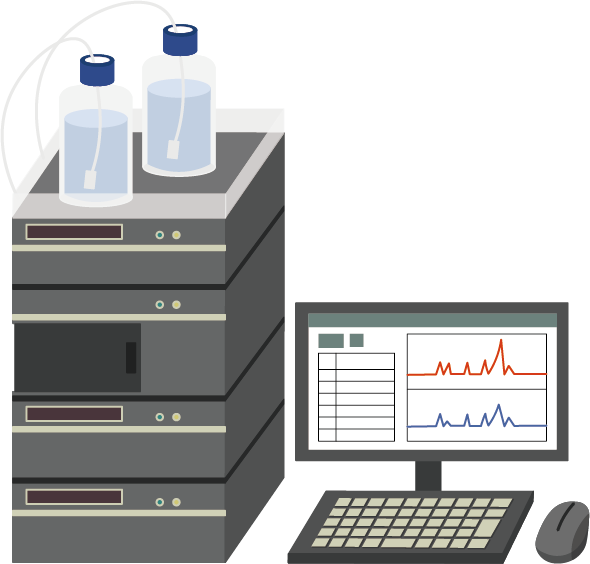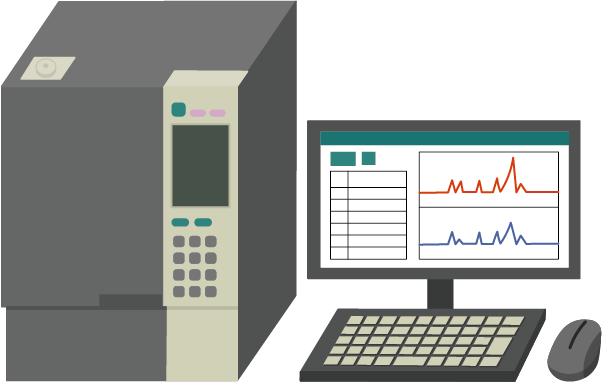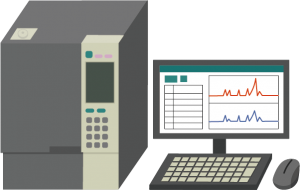Psychedelic Testing
Psychedelic Potency Testing
Turnaround time: 48 hours
Altitude Consulting uses liquid chromatography to test the potency of the most common psychedelic substances. Although we can test the potency of the listed compounds in virtually any sample type, we most commonly work with edibles, psilocybin mushrooms, various mescaline producing cacti, and DMT containing Mimosa hostilis roots. With the use of the latest HPLC-DAD technology and software we ensure the most accurate results in analyzing these samples.
Compounds Covered:
- Aeruginascin
- Baeocystin
- N,N-Dimethyltryptamine
- 4-AcO-DMT*
- 4-hydroxy TMT (iodide)
- 5-hydroxy-DMT (hydrochloride)
- 5-methoxy-DMT
- 5-methoxy- NMT
- Mescaline (hydrochloride)
- Norbaeocystin
- Norpsilocin
- Psilocin
- Psilocybin
* 4-AcO testing is available as an add-on to our normal psychedelic panel. This test is performed as a binary test so results will be qualitative (positive or negative).
Instrument Used:
High Performance Liquid Chromatography (HPLC)

-
All sample types $100
Minimum Sample Size: 0.5g
Regular turnaround. -
4-AcO Add-on $40
A binary test for the presence of 4-AcO-DMT.
-
Next Day Turnaround Fee $100
Samples received by 11AM MST will receive results before 5PM MST the next day.
-
Same Day Turnaround Fee $200
Samples received by 11AM MST will receive results before 5PM MST that day.
Amanita Muscaria Potency Testing
Turnaround time: 72 hours
Altitude Consulting uses liquid chromatography to test the potency of the two most common psychedelic substances found in the Amanita muscaria mushroom, ibotenic acid and muscimol. With the use of the latest HPLC-DAD technology and software we ensure the most accurate results in analyzing these samples.
Compounds Covered:
- Ibotenic Acid
- (+)-muscarine (tosylate)
- Muscimol
- Thiomuscimol
Instrument Used:
High Performance Liquid Chromatography (HPLC)

Psychedelic Potency Testing
Turnaround time: 48 Hours
Altitude Consulting uses liquid chromatography to test the potency of the most common psychedelic substances. Although we can test the potency of the listed compounds in virtually any sample type, we most commonly work with edibles, psilocybin mushrooms, various mescaline producing cacti, and DMT containing Mimosa hostilis roots. With the use of the latest HPLC-DAD technology and software we ensure the most accurate results in analyzing these samples.
- Aeruginascin
- Baeocystin
- N,N-Dimethyltryptamine
- 4-acetoxy-DMT*
- 4-hydroxy TMT (iodide)
- 5-hydroxy-DMT (hydrochloride)
- 5-methoxy-DMT
- 5-methoxy- NMT
- Mescaline (hydrochloride)
- Norbaeocystin
- Norpsilocin
- Psilocin
- Psilocybin
* 4-AcO testing is available as an add-on to our normal psychedelic panel. This test is performed as a binary test so results will be qualitative (positive or negative).
High Performance Liquid Chromatography (HPLC)
-
All samples $100
Minimum sample size: 0.5g
Regular turnaround. -
4-AcO
Add on $40A binary test for the presence of 4-AcO-DMT.
-
Next day
turnaround fee $100Samples received by 11AM MST will receive results before 5PM MST the next day.
-
Same Day
turnaround Fee $200Samples received by 11AM MST will receive results before 5PM MST that day.
Amanita Muscaria Potency Testing
Turnaround time: 72 Hours
Altitude Consulting uses liquid chromatography to test the potency of the two most common psychedelic substances found in the Amanita muscaria mushroom, ibotenic acid and muscimol. With the use of the latest HPLC-DAD technology and software we ensure the most accurate results in analyzing these samples.
- Ibotenic Acid
- (+)-muscarine (tosylate)
- Muscimol
- Thiomuscimol
High Performance Liquid Chromatography (HPLC)
Residual Solvents Testing
Turnaround time: 48 hours
Altitude Consulting uses GC/MS Headspace to test for 19 common solvents used for extraction and cleaning in the psychedelic industry. GC/MS technology gives us the ability to identify unknown hits. Testing for solvents can be useful for ensuring that solvents used for extractions have been fully removed before proceeding in the formulation process.
Compounds Covered:
- 2-methylbutane
- Acetone
- Acetonitrile
- Benzene
- Butane
- Ethanol
- Ethylbenzene
- Isobutane
- Isopropanol
- M+P xylene
- Methanol
- N-Heptane
- N-hexane
- N-pentane
- O-xylene
- Propane
- Tetrahydrofuran
- Toluene
Instrument Used:
Gas Chromatography—Mass Spectrometry (GC-MS) Headspace

Psychedelic Residual Solvents Testing
Turnaround time: 48 Hours
Altitude Consulting uses GC/MS Headspace to test for 19 common solvents used for extraction and cleaning in the psychedelic industry. GC/MS technology gives us the ability to identify unknown hits. Testing for solvents can be useful for ensuring that solvents used for extractions have been fully removed before proceeding in the formulation process.
- 2-methylbutane
- Acetone
- Acetonitrile
- Benzene
- Butane
- Ethanol
- Ethylbenzene
- Isobutane
- Isopropanol
- M+P xylene
- Methanol
- N-Heptane
- N-hexane
- N-pentane
- O-xylene
- Propane
- Tetrahydrofuran
- Toluene
Gas Chromatography—Mass Spectrometry (GC-MS) Headspace
Heavy Metals Testing
Turnaround time: 1-2 Weeks
Heavy metals tend to be toxic to humans at even very low concentrations. For now, there isn’t state mandated testing required on psychedelics. Nevertheless, ensuring the absence of heavy metals is a safe choice on behalf of those who use your products. We offer testing for what will likely become the four state-mandated metals, lead (Pb), arsenic (As), cadmium (Cd) and mercury (Hg).
Compounds Covered:
- Arsenic (Ar)
- Cadmium (Cd)
- Lead (Pb)
- Mercury (Hg)
Instrument Used:
Inductively Coupled Plasma Mass Spectrometry (ICP-MS)

Heavy Metals Testing
Turnaround time: 1-2 Weeks
Heavy metals tend to be toxic to humans at even very low concentrations. For now, there isn’t state mandated testing required on psychedelics. Nevertheless, ensuring the absence of heavy metals is a safe choice on behalf of those who use your psychedelic products. We offer testing for what will likely become the four state-mandated metals, lead (Pb), arsenic (As), cadmium (Cd) and mercury (Hg).
- Arsenic (Ar)
- Cadmium (Cd)
- Lead (Pb)
- Mercury (Hg)
Inductively Coupled Plasma Mass Spectrometry (ICP-MS)
DNA Sequencing
Turnaround time: 2-3 Weeks
Our mushroom DNA sequencing service offers a straightforward solution for validating your mushroom breeding efforts. By identifying species with precision, this test ensures the quality and authenticity of your products, enhancing consumer trust in your brand. Ideal for optimizing breeding strategies, it’s a simple yet powerful tool from our lab to support your commitment to excellence.
Regions Covered:
- ITS1
- 5.8S
- ITS2
Method Used:
Sanger Sequencing via capillary electrophoresis
DNA Sequencing
Turnaround time: 2-3 Weeks
Our mushroom DNA sequencing service offers a straightforward solution for validating your mushroom breeding efforts. By identifying species with precision, this test ensures the quality and authenticity of your products, enhancing consumer trust in your brand. Ideal for optimizing breeding strategies, it’s a simple yet powerful tool from our lab to support your commitment to excellence.
- ITS1
- 5.8S
- ITS2
Sanger Sequencing via capillary electrophoresis (CE)
Pesticides Testing
Turnaround time: 1-2 Weeks
Pesticides are often used to help keep crops growing strong and rid them of pesky pests. Unfortunately, just as much as they help keep plants alive, they harm humans. Although there is not state mandated testing for pesticides in psychedelics, pesticides are often used to aid in the growth of mushrooms, cacti, and plants, such as Mimosa hostilis. We’ve worked with AB Sciex to develop a method to detect over 50 different pesticides to ensure that your products are safe.
Instrument Used:
Gas Chromatography—Mass Spectrometry Triple Quadrupole (GC-MS-MS)

Compounds Covered:
- Abamectin
- Acephate
- Acequinocyl
- Acetamiprid
- Azoxystrobin
- Bifenazate
- Bifenthrin
- Boscalid
- Carbofuran
- Chlorantraniliprole
- Chlorpyrifos
- Chlorfenapyr
- Clofentezine
- Cyfluthrin
- Cypermethrin (technical)
- Daminozide
- Diazinon
- Dichlorvos
- Dimethoate
- Ethoprophos
- Etofenprox
- Etoxazole
- Fenoxycarb
- Fenpyroximate
- Fipronil
- Flonicamid
- Fludioxonil
- Hexythiazox
- Imazalil
- Imidacloprid
- Kresoxim-methyl
- Malathion
- Metalaxyl
- Methiocarb
- Methomyl
- MGK 264
- Myclobutanil
- Naled
- Oxamyl
- Paclobutrazol
- Parathion-methyl
- Permethrin
- Phosmet
- Piperonyl butoxide
- Prallethrin
- Propiconazole
- Propoxur
- Pyrethrins
- Pyridaben
- Spinosad
- Spiromesifen
- Spirotetramat
- Spiroxamine
- Tebuconazole
- Thiacloprid
- Thiamethoxam
- Trifloxystrobin
Minimum sample sizes:
Biomass: 1g
All other samples: 0.5g
Pesticides Testing
Turnaround time: 1-2 Weeks
Pesticides are often used to help keep crops growing strong and rid them of pesky pests. Unfortunately, just as much as they help keep plants alive, they harm humans. Although there is not state mandated testing for pesticides in psychedelics, pesticides are often used to aid in the growth of mushrooms, cacti, and plants, such as Mimosa hostilis. We’ve worked with AB Sciex to develop a method to detect over 50 different pesticides to ensure that your products are safe.
- Abamectin
- Acephate
- Acequinocyl
- Acetamiprid
- Azoxystrobin
- Bifenazate
- Bifenthrin
- Boscalid
- Carbofuran
- Chlorantraniliprole
- Chlorpyrifos
- Chlorfenapyr
- Clofentezine
- Cyfluthrin
- Cypermethrin (technical)
- Daminozide
- Diazinon
- Dichlorvos
- Dimethoate
- Ethoprophos
- Etofenprox
- Etoxazole
- Fenoxycarb
- Fenpyroximate
- Fipronil
- Flonicamid
- Fludioxonil
- Hexythiazox
- Imazalil
- Imidacloprid
- Kresoxim-methyl
- Malathion
- Metalaxyl
- Methiocarb
- Methomyl
- MGK 264
- Myclobutanil
- Naled
- Oxamyl
- Paclobutrazol
- Parathion-methyl
- Permethrin
- Phosmet
- Piperonyl butoxide
- Prallethrin
- Propiconazole
- Propoxur
- Pyrethrins
- Pyridaben
- Spinosad
- Spiromesifen
- Spirotetramat
- Spiroxamine
- Tebuconazole
- Thiacloprid
- Thiamethoxam
- Trifloxystrobin
Gas Chromatography—Mass Spectrometry Triple Quadrupole (GC-MS-MS)
Minimum sample sizes:
Biomass: 1g
All other samples: 0.5g
Microbials Testing
Turnaround time: 1-2 Weeks
It is difficult to grow mushrooms without becoming acutely aware of the potential for contamination. That’s why verifying that there is no yeast or mold before processing helps to guarantee that it will not begin to flourish during processing to ensure that products are safe for consumption.
Compounds Covered:
- Yeast
- Mold
Instrument Used:
Thermal Cycler—Fluorometer used for Quantitative Polymerase Chain Reaction (qPCR)
Microbials Testing
Turnaround time: 1-2 Weeks
It is difficult to grow mushrooms without becoming acutely aware of the potential for contamination. That’s why verifying that there is no yeast or mold before processing helps to guarantee that it will not begin to flourish during processing to ensure that products are safe for consumption.
- Yeast
- Mold
Thermal Cycler—Fluorometer used for Quantitative Polymerase Chain Reaction (qPCR)
Common questions

Because psychedelic testing is as new as it is, we have not been able to add psychedelics into our ISO scope, yet. That being said, we are still adhering to the same standards for psychedelic testing as those of our ISO certified cannabis testing program.
The exception to this is certain compounds which simply do not yet have true Certified Reference Material (CRM) standards available. These are individually denoted on the potency testing section of this testing page.
For a long time, doses of psychedelics were based around weight of raw material. Although this is better than nothing, it is by no means a surefire method. At the lab, we have seen mushrooms that contain as low as 0.02% psilocybin by weight. The enigma mushroom that won the psilocybin cup in 2021 had contained 2.26% psilocybin by weight. A single gram of each of these would hold 0.2mg and 22.6mg of psilocybin, respectively. Considering the vast differences in psilocybin content from mushroom to mushroom, testing could be the difference between not feeling anything and accidentally taking a “heroic dose”.
We use a variety of instrumentation for psychedelic testing, depending on the test. These include High-Performance Liquid Chromatography (HPLC), Gas Chromatography-Mass Spectrometry (GC-MS) Headspace, GC-MS Triple Quadrupole, Inductively Coupled Plasma Mass Spectrometry (ICP-MC).
All testing has a small margin of error to account for different factors such as standards, instrumentation, human error, etc. The margin of error that we work within is ±7% for psychedelics. It should be noted though that because psychedelic testing is so new, there are not certified reference materials for every standard type. Where this is the case, we are using a qualitative standard as opposed to a quantitative standard. The differences in purity of these standards is marginal (~98.5% vs. 99.8%), but should be taken into account when considering results from those tests. Certificates of Analysis for every standard used are available upon request, just give us a shout.
This is a loaded question, that nevertheless, is asked quite frequently. There is research being done right now on how the different psychedelic compounds work together and whether or not they mimic cannabis with an entourage effect. For now though, it is certainly known that, although psychedelics are experienced slightly differently from user to user, there is a proportional correlation between dose and perceived effects.
They can, but because results are based on weight of sample, the extra water weight in the sample will make the results be artificially lower than those of a dry sample.

